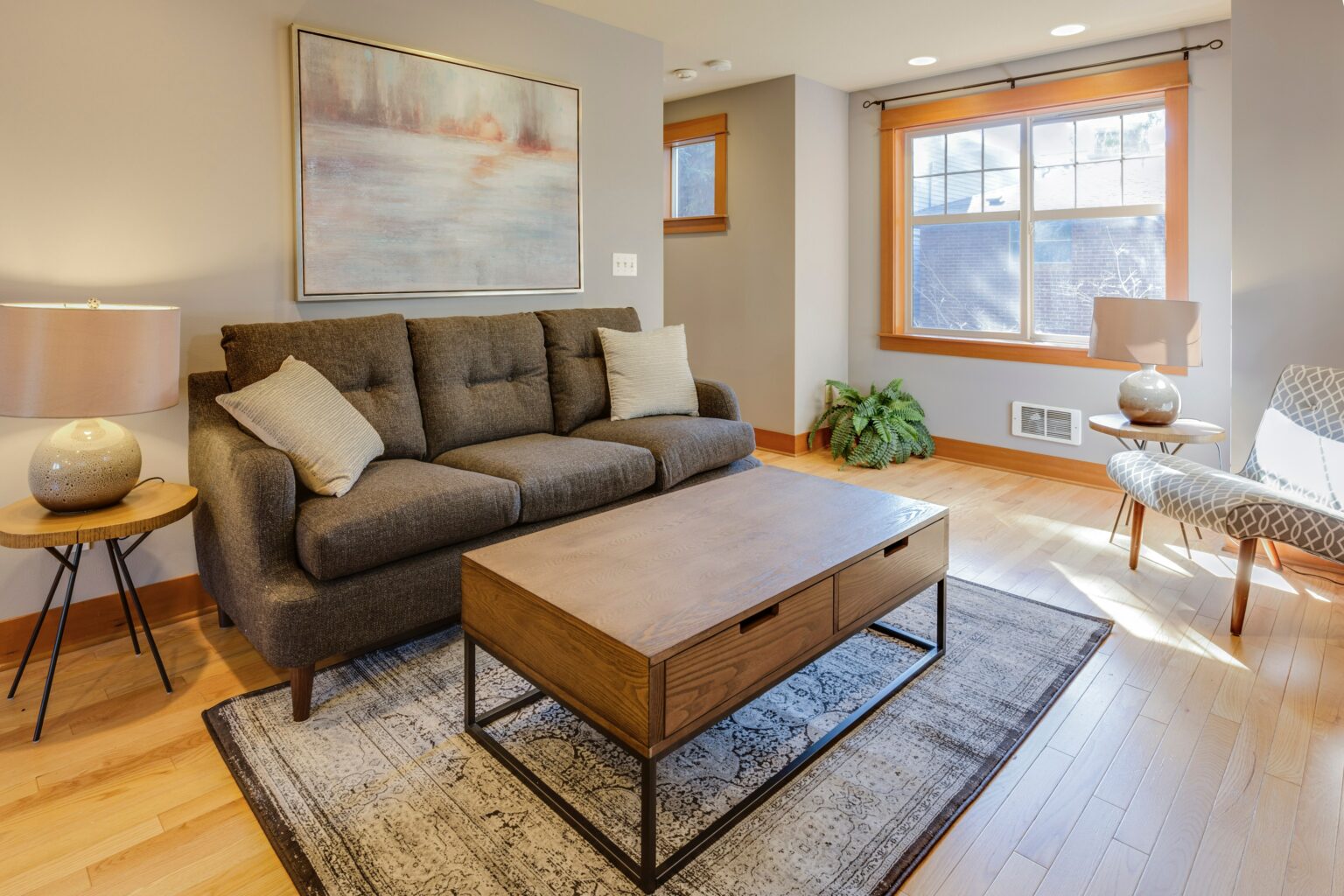Imagine you’re looking for your dream home or a house to invest in. You enter the property and it’s a little dirty, with old décor pieces, some stained walls and a whole lot of personal belongings cluttering the space. It’s a little odd, right? It wouldn’t instantly feel like home to you.
Now, picture yourself entering the same place, but better. The house is spacious, clean, luminous and beautifully decorated, it’s practically inviting you in. Quite a different sensation, huh? This is what home staging does.
In this article you will understand what is home staging, the benefits of applying these techniques to your work as an estate agent and a few tips for home staging by yourself or with the help of a professional.
What is home staging?
Home staging is a marketing strategy that motivates potential buyers to buy the homes they are visiting. It involves transforming the house into a blank canvas, removing traces of the personality of the owner from the place and making the property look like it fits in anyone’s lives.
The home staging process aims to:
- Pretend there’s a wonderful life being lived inside the property
- Draw attention to the property’s best features, while detracting from the worst
- Make potential buyers visualize themselves living in that home
- Bring a sensation of cosiness to the environment, making it look at its best
Summarizing, home staging is a technique that helps estate agents in their job, showing to homebuyers the many possibilities that one single property can offer.
What are the benefits of adding some home staging ideas to your work
The numbers shown in a research conducted by the Home Staging Association of the United Kingdom & Ireland in 2019 definitely show the efficiency of staging a home for sale. Let’s see some of those benefits.
- Staged properties attract more homebuyers
Any person who’s looking to buy or rent a house online is attracted by beautiful photos, right? The better the home appears on the photos, the more interested the potential buyer gets.
Well, the same happens with the visits. The research showed that 75% of estate agents reported that homebuyers spent more time viewing stages properties than unstaged ones. The cozy environment created really makes people feel at ease and help them envision a life inside that home.
- Home staging helps selling homes faster
Nothing less than 85% of the real estate professionals interviewed on the research stated that staged properties sell 3 times faster than others. Forget having the property for sale on the market for months, this is a way of speeding things up for both the estate agent and the client.
The Home Staging Association of Spain reinforces this trend: the institution states that staging a home for sale speeds up to 4 times the selling process. Using data from a study conducted in France, they show that applying these techniques to a property decreases the time on the market from an average of 130 days to something around 35.
- These techniques increase the properties’ selling prices
While it might bring extra costs to your clients, staging a home for sale, according to the same research previously mentioned, can increase your selling price up to 10%. Also, 77% of developers saw a return in their investment, paying for the cost of home staging and with the sale of the house.
So, these techniques provide a very good value for money, since the client will be able to get the investment they made back and still seal the deal on the home for a desirable amount.
Staging a home for sale: tips for selling faster
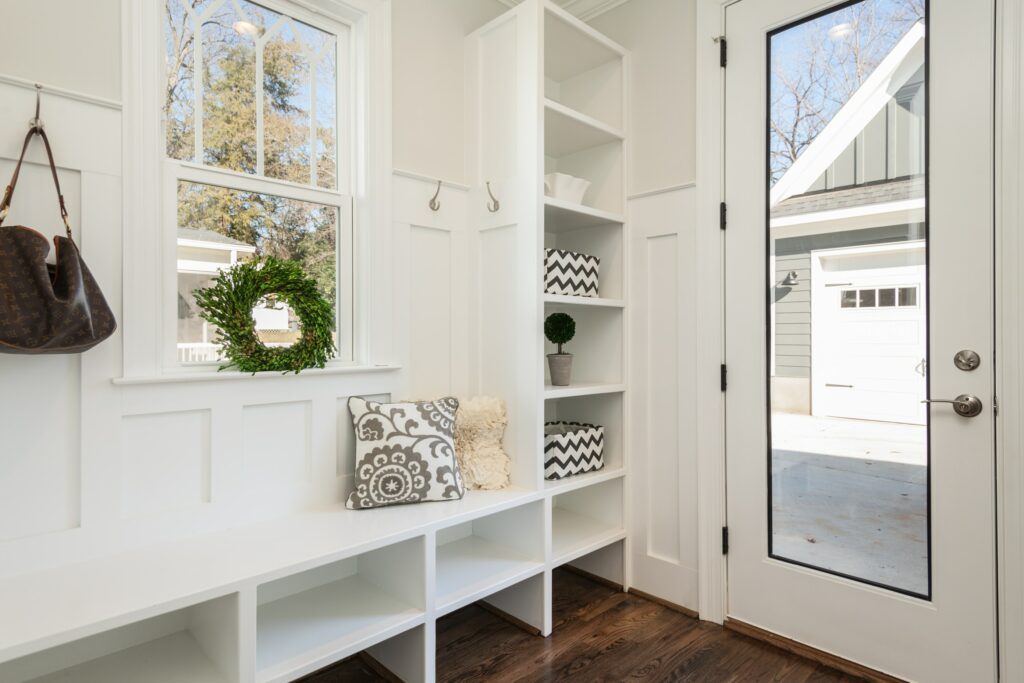
If you’re an estate agent, interior decor might not be something you’re familiar with. But this doesn’t mean you can’t pay attention to some basic home staging ideas to make your client’s feel more appealing to homebuyers. Check them out!
Think about the most suitable profiles for the homebuyers
One of the most basic tips for home staging is activating your knowledge of the real estate market. Before starting any transformation and preparing the house for the selling, think about which profiles of clients tend to buy this kind of property. For example, studios and one-bedroom apartments attract single young professionals and couples without kids, while a three-bedroom property usually attracts families with kids.
Basic maintenance before staging a house for sale
If the house shows many signs of being used, the estate agent should definitely talk to the client about doing a little maintenance as part of the home staging. You want to make sure small imperfections and problems are corrected before putting the house on the market.
Walls that are stained, bubbly or faded should receive a new coat of paint to look brand new. Wardrobes and cupboards with doors that do not close properly should be fixed. Chipped furniture or with cup marks should also go through some maintenance.
Starting with the outside
The art of home staging starts even before you enter the house. After all, first impressions do matter. If the property has an outdoor area, like a garden or a yard, there are a few simple measures you can do to make a good impression on potential buyers.
First of all, before starting the visits, remind the clients to cut the grass and clean the pavement. A clean and organized yard makes families imagine all the great outdoor activities that could take place on it. Also, adding a doormat to the entrance is a good idea. It both adds a bit of soul to the house and avoids wet or dirty shoes to damage the interior’s cleanliness.
Finally, orient them to oil that gate that insists on getting stuck or the hinges of that door that creaks when opened. This will transform the first few moments of the homebuyers at the house, putting away anything that can distract them and inviting them to a more immersive experience.
Make the house ready for a meal
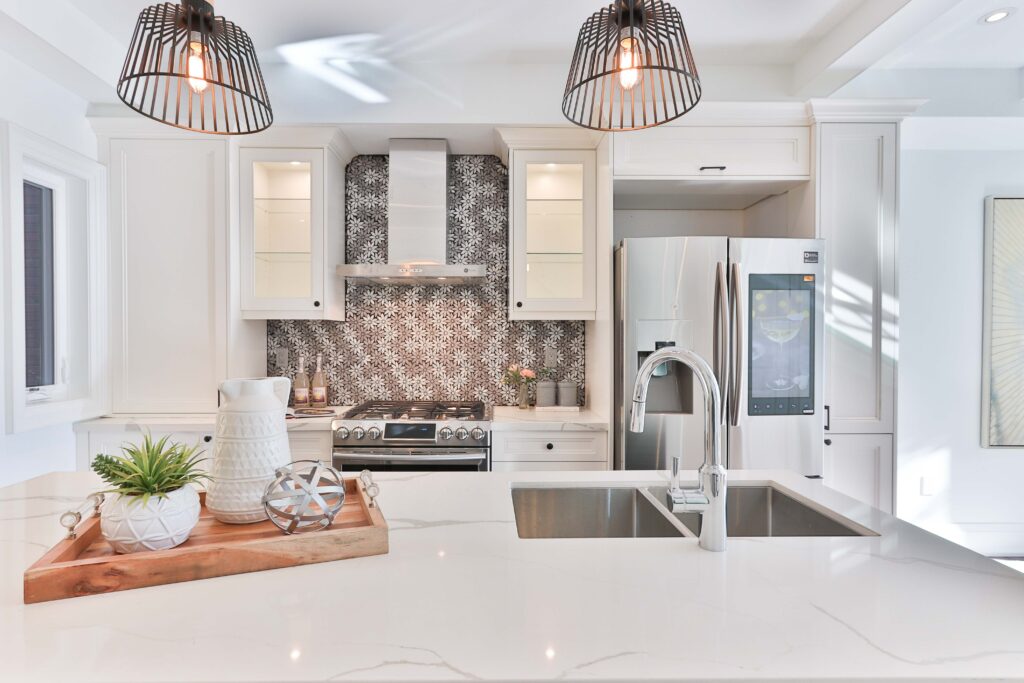
One of the basic tips for home staging is to set the table to receive the visitors. This makes potential homebuyers imagine the nice moments they will get to enjoy with family and friends around the table in their new house.
If setting a full table, with plates, cups and cutlery, might seem a little too much, then you can opt for displaying only a basket with fruits beside cups and a freshly-made bottle of coffee. If you’re willing to go the extra mile, you can even bake a cake or a few cookies on the house before their arrival. You get to serve the visitors a little snack and receive them with an amazing smell of freshly-baked goods.
Home staging ideas for a low cost transformation
If your clients are not willing to spend much more money on the house, then try to convince them to at least stage the most important rooms.
A total of 74% of estate agents interviewed by the HSA UK & Ireland consider that the living room is the most important place to be staged, 10% opt for the kitchen and another 10% for the master bedroom. These are the places homebuyers are most likely to spend time on and be interested in, so every detail matters, for the good and for the bad.
So, if you can persuade them to make one last investment, choose these places to beautify.
And as for tips for home staging without spending much money, bringing plants inside the house is a way to add personality to a room that’s empty or without much decoration. They make the place look lively and are neutral, in the sense that they fit in any style or décor.
Another good point here is that they can be easily transported to other places, in which the estate agent could also use them for home staging.
The same goes for books. Cookbooks can be displayed over the kitchen counters or on the kitchen island, while decorative books could be laid down on the coffee table, on a bedside table or positioned on a bookcase. They can make a house look cozy, without feeling too personal.
To lower the costs when staging a home for sale, these books can be borrowed from a library, from friends, from the estate agent’s personal bookshelf or even bought from antiquarian bookshops.
Neutral décor objects, like simple paintings or vases, could also be good additions to the environment and can be found on flea markets, for an instance.
Staging a home for sale when there’s still people in it
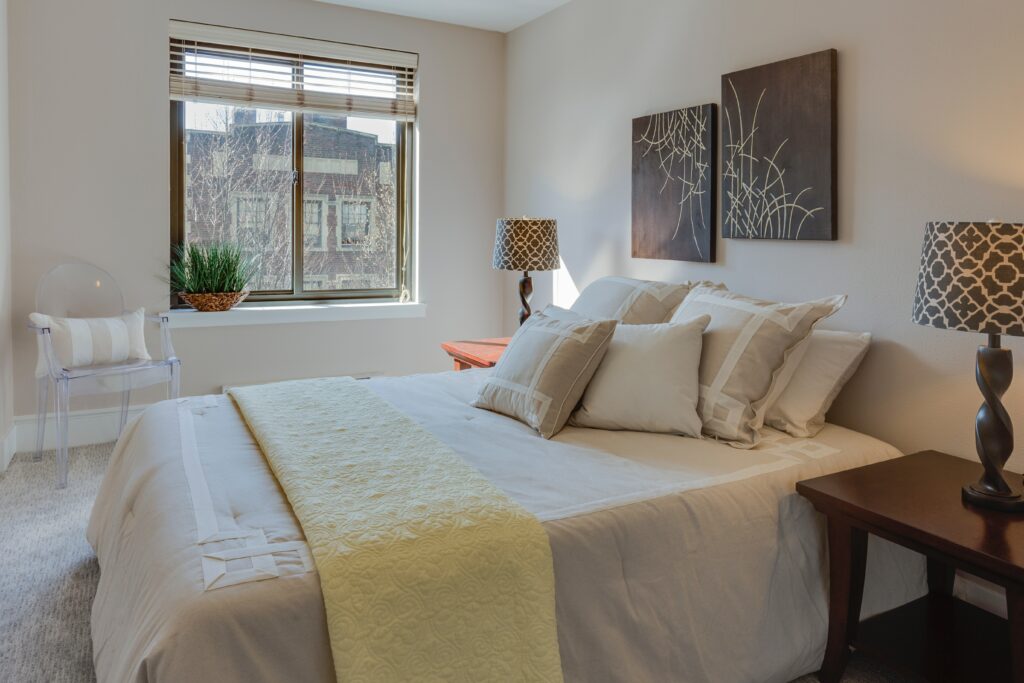
If your clients are living in the house while you are conducting the visits, then there’s definitely some home staging to do. Avoiding clutter and signs of used furniture is a way of making the house look new, well-taken care of and sell for much more.
First of all, talk to your clients about how important it is to remove the objects that characterize the house as theirs, which could act as an impediment to homebuyers portraying themselves as owners of that place. This means hiding the photos that are around the house, the kids’ drawings that are on display on the fridge and paintings with a lot of personality.
Also, before the visits, it’s important to remove from sight personal objects, like hygiene products lying on the sink and cups used for drinking water on the kitchen counter.
Now, it’s time to take care of the décor side of things. Remove part of the decoration so the property doesn’t look messy or cluttered, as well as children’s toys spread among the rooms and unnecessary pieces of furniture.
Another important thing is to hide anything that is old or broken. A cracked mirror or ancient kitchen appliances may give the impression that the whole house is way too old, which might make homebuyers wonder if many repairs are needed.
Still talking about home staging a house for sale while it’s still being used, remember to look for details that might attract the attention of homebuyers to the fact that there’s other people living there. Before every visit, warn the seller to change the bedding, the towels and make the bed.
Finally, if there are any wardrobes and cupboards being sold with the house, then their interior should be organized. Homebuyers might want to see how they are on the inside and the estate agent certainly doesn’t want them to see a massive clutter when the doors are opened.
At this moment, the goal is to avoid visual clutter, making the house look spacious and providing a neutral look to the environment.
Cleaning tips for home staging
There’s nothing like a dirty house to scare potential homebuyers away. Cleanliness is key to making a good impression, so make sure to add this step to the home staging process and double check if the property is presentable before every visit.
This is even more important in rooms like the kitchen and the bathroom, where people tend to be extra sensitive about the dirt. So, remember your clients to clean the kitchen counters, the sink, the handbasin, the toilet, the windows and to empty the trash bins.
If there are any rugs in the house, they should also be cleaned or removed not to cause the wrong impression.
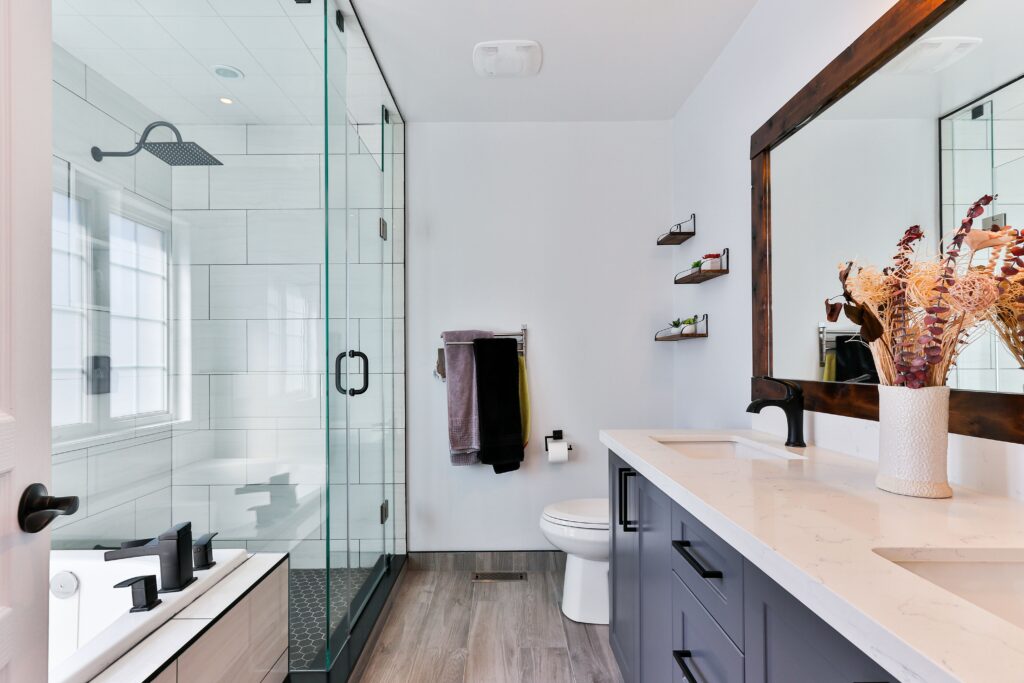
Activating other senses
We are attracted to a house by a multitude of factors, not necessarily by objects and furnishings. So, try to think of ways to activate new sensations when receiving potential homebuyers for a visit.
For the sight, open the windows and let the natural light flow through the room during the day. If the visit takes place at night, then think about a cozy way of lighting the place, with the help of side lamps, for example.
For the smell, opening the windows also helps: you renovate the air in the house, refreshing the place. Spray a mild perfume through the rooms or light a candle to add this extra delight to the visit.
For the hearing, choose a playlist with discreet and pleasant sounds.
And, to make them feel at ease right after crossing the front door, remember to think about thermal comfort. During summer time, turn on the air conditioning around half an hour before the visit and set the temperature for around 23ºC. In autumn or spring, let the chill breeze in through some of the windows, but not all of them. And in winter times, remember to turn the heat on a few minutes before letting people in.
Now that you know what home staging is, how it works and got a few home staging ideas, waste no more time: start talking about this topic with your clients to speed the selling of the homes in your property portfolio.
Main photo by Francesca Tosolini on Unsplash
